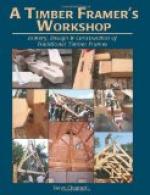|
This section contains 711 words (approx. 3 pages at 300 words per page) |

|
Poison in Our Backyards? Pressure-treated Lumber and Its Health Effects
Summary: The powerful pesticide chromated copper arsenate (CCA), used to preserve wood beginning in the 1940s, was taken off the market in 2003 after it was determined to pose an environmental and health threat. This step raised two questions: What should be done with the existing CCA-treated wood used for our playgrounds and boardwalks, and what alternative wood treatments are available? The increasingly popular Alkaline Quat Copper method is expected to carry a higher cost and lesser durability than CCA, but its advantages in terms of safety warrant consideration.
Poison in our backyards? This was the question posed then debated as to whether pressure treated lumber used for almost all outdoor projects could seriously harm the people coming into contact with it. After a slew of tests and debates across the nation, it was finally proven that the powerful pesticide called chromated-copper-arsenate, or CCA, used to preserve wood since the 1940s, posed an environmental and health threat. As a result, production halted in December 2003.
The element arsenic is a naturally occurring element in the earth's crust. Pure arsenic is a gray-colored metal very rarely found in the environment. There are two kinds of arsenic, organic and inorganic. When combined with elements like oxygen, chlorine, and sulfur, it is known as inorganic arsenic. When combined with carbon and hydrogen, it is referred to as organic arsenic, the organic form being less toxic than the inorganic. Arsenic is produced...
|
This section contains 711 words (approx. 3 pages at 300 words per page) |

|


